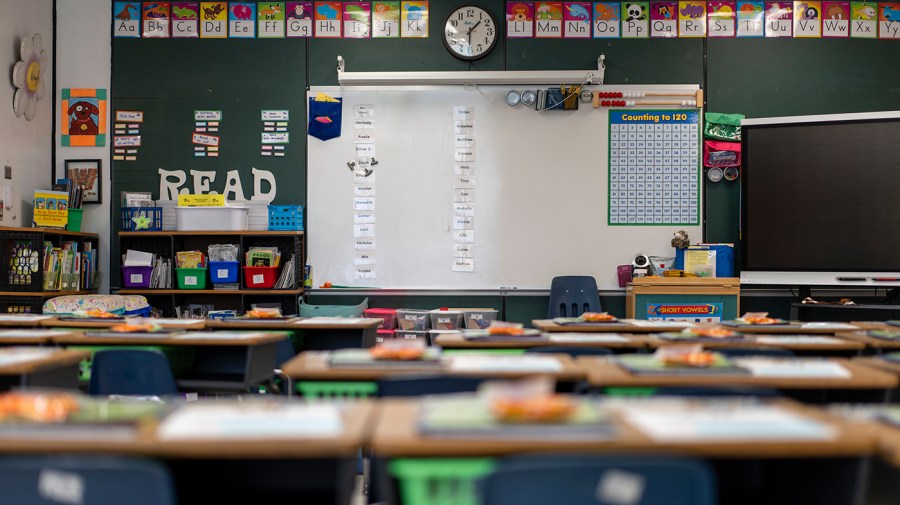
President Trump’s education initiatives are coming on fast, but school officials say changes in the classroom will happen at a much slower pace.
While officials say the past few weeks have been a whirlwind of education news, from Title IX changes to Department of Education funding cuts, K-12 schools are waiting for more specific guidance on what has to change and ensuring they don’t act too quickly one way or another.
The more cautious approach also might help avoid community panic
“I’m not gonna lie. It is a lot,” said Kenny Rodrequez, superintendent of the Grandview C-4 School District in Missouri. “Every administration change, it is a lot, it typically is a lot of changes and a lot of things. This just seems to have sped everything up […] there’s a lot more things coming out in a shorter period of time than what we’ve maybe been used to in the past. “
“I will say it’s not necessarily too overwhelming as of yet just because lot of the things that have been said aren’t necessarily law yet, or are not necessarily things that can 100 percent be put into motion, but a lot of it is fear,” added Rodrequez, who has been in school administration for 20 years and a superintendent for 9.
The firestorm began last month, when Trump signed multiple executive orders affecting both grade schools and higher education. Among the orders was a directive for critical race theory and gender issues to be banned from K-12 schools, with an emphasis on a “patriotic education.”
The pipeline from Trump’s desk to classroom changes is not a straight shot as districts do not tend to make any changes until guidance comes from their state Department of Education that is then reviewed by school boards and superintendents.
Once an order is signed, “we still wait for our district to give us guidance, and the district usually waits on guidance from lawmakers and policy makers, from the state Department of Education, from the federal government, saying that this is what’s enacted, and this is what we have to do,” said Nicole Paxton, assistant principal of Mountain Vista Community School in Colorado.
“And so we’re kind of in a waiting game right now to see what those next steps might look like,” Paxton added.
Along with Trump’s executive orders, the Department of Education has been very active despite not having nominee Linda McMahon confirmed as secretary.
The department has reverted the definition of Title IX back to the one used during the first Trump administration, taking away protections based on sexual orientation and gender identity that were adopted under former President Biden.
The federal agency has also cut more than a billion dollars in funding, including for teaching training grants and research support.
“I think we have some hesitancy about what’s coming, but we’re just now starting with the Department of Education,” said Marcus Belin, principal of Huntley High School in Illinois.
“Nothing has really reached the states, and the states haven’t reached the local municipalities. So, I think what’s rolling downhill just hasn’t come yet. And so, I think the hesitancy is that we’re all leery about what potentially is coming,” Belin added.
The biggest challenge schools have undertaken so far with all the federal moves is addressing the concerns of the community as parents, students and teachers struggle to parse through what the Trump administration means for their future.
“A lot of the families and a lot of the people internally with my staff, they do get very concerned and very scared thinking that funding is going to be shut off tomorrow, and it’s not the way it works, but we are monitoring those things,” said Rodrequez.
Fears among some families began early in the administration when the Department of Homeland Security said immigration enforcement could go into schools. Although there have been no reports of immigration raids in schools, some have kept their students home and away from the classrooms.
” We have policies, we have procedures, we have guidance that governs that. But it doesn’t mean that there’s not a lot of concern and a lot of fear. So, for us, it’s trying to dismantle what’s real, what should we be concerned about now and what do we continue to monitor and watch over a longer period, knowing that these things might come to fruition and some of them might not, but it’s all stuff that we have to kind of monitor, so it definitely is a lot more in a shorter period of time than what we’ve maybe seen in previous administrations,” Rodrequez added.












